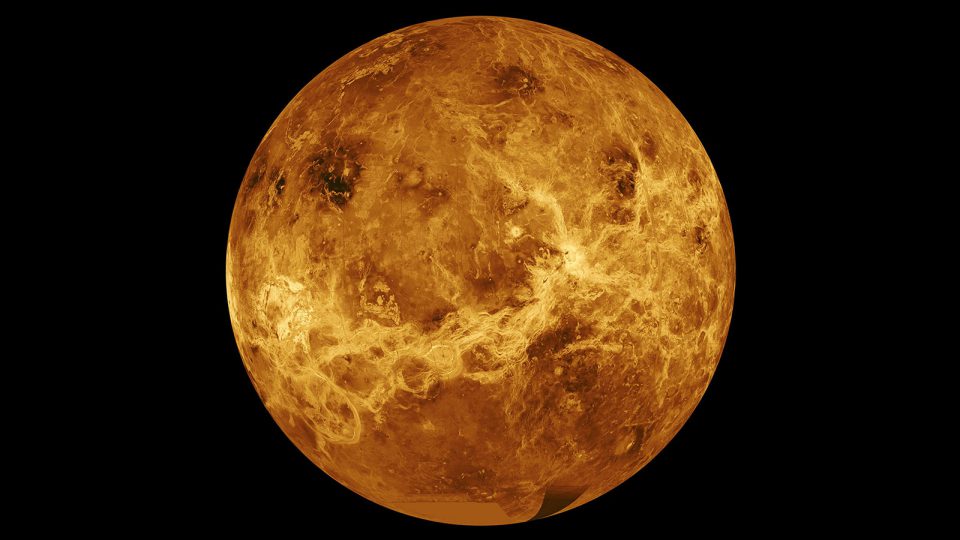Extra-terrestrial possibility of life has been the main focus of Space Research ever since we got to know how to escape the Earth. NASA has been studying Mars for decades now, to find microbial life signs in the planet. Even Jupiter’s Europa was said to be potential enough for life to contain. But NASA aims at another planet, a planet so bright that it’s mistaken to be an “evening star”, yes it’s “Venus”.
NASA is ready to fund upto 1 billion dollars for two missions on inferno world, our neighbour and closer one to the sun. It is explored because Venus is believed to have contained life in the past, until something happened in its atmosphere which is also the focus of this mission.
The mission’s aim would be studying how Venus became the hottest member of our Solar system, even though it has similar characteristics as that of Earth. If it’s true that Venus contained life once, then this planet would be the first habitable world in our Solar system, with a complete ocean and earth like climate, NASA said in a statement.
Being named after the Roman goddess of beauty, Venus indeed is the centre of attraction among the planetary scientists, calling out for probes to be sent to explore this unexplored land. The planet recorded a temperature of up to 470 degree Celsius. This is the only planet in our Solar system that rotates clockwise in its axis and the planet’s atmosphere is filled with mainly carbon dioxide. The clouds are made of sulphuric acid droplets and a thick atmosphere trapping the sun’s heat, together making Venus reach an unbelievable high surface temperature.
The two missions focus on different aspects of the planet. The mission was dubbed DAVINCI and VERITAS, the funding of billion dollars will be divided equally. Launch to the expected in the year 2028-2030.
DAVINCI+
The Deep Atmosphere Venus Investigation of Noble gases, Chemistry, and Imaging missions dubbed DAVINCI+, the abbreviation is almost self explanatory. This mission focuses on the measure of composition of Venus atmosphere, how it formed and evolved. Also to find evidence if the planet ever contained a lake or ocean, just like the evidence scientists found in Mars and Jupiter’s moon Europa and scientists believed this planet had water on their surface, until things turned bad. “The mission consists of a descent sphere that will plunge through the planet’s thick atmosphere, making precise measurements of noble gases and other elements to understand why Venus’ atmosphere is a runaway hothouse compared to the Earth’s,” Nasa said in a statement.
To help with this mission of DAVINCI, he would be carrying a high resolution camera, which will capture the surface of Venus and will be compared with our own Earth. And also they have a high resolution ultraviolet measurement device, which will try to feature how Venus could trap half of the sun’s light coming in.
VERITAS
The Venus Emissivity, Radio Science, InSAR, Topography, and Spectroscopy missions dubbed VERITAS will focus on mapping the surface and by doing so they determine the geologic history of the planet. It also aims to understand why Venus evolved differently from us, i.e., different from Earth. It basically creates a 3D topography model of the planet and looks for the signs of plate tectonics. It also checks for any volcanic activity around the planet and determines whether these volcanoes release water vapour into the surface. It makes use of infrared emission from the surface and maps it’s rock type.
“It is astounding how little we know about Venus, but the combined results of these missions will tell us about the planet from the clouds in its sky through the volcanoes on its surface all the way down to its very core,” NASA quoted Tom Wagner, Discovery Program scientist as saying.
While the two missions are going to be ground breaking, it’s not the first time we have launched a mission to Venus. In 1962 a satellite named Mariner-2 was the first to fly as close as 34,400 km to the surface of Venus, transmitted information such it’s temperature, atmosphere and rotational period. Soviets never miss out a party, the Venera program of Soviet Union with Venera-4 was the first spacecraft to reach the surface of Mars. Though it lasted for just a few minutes, it gave vital information of the planet, information such as the composition of the planet.

